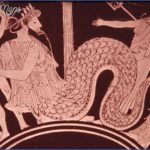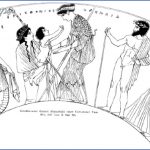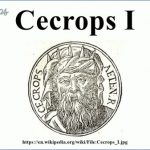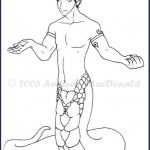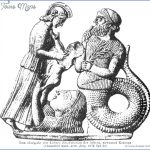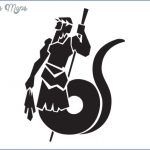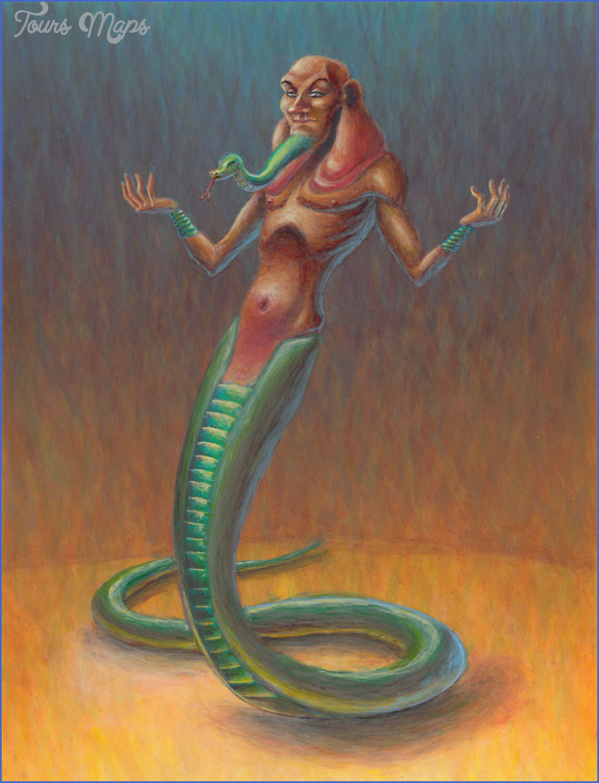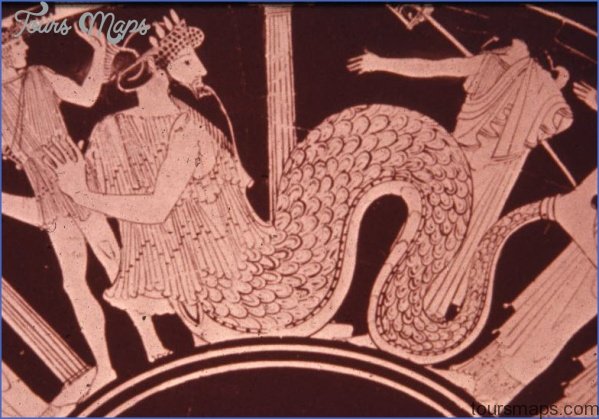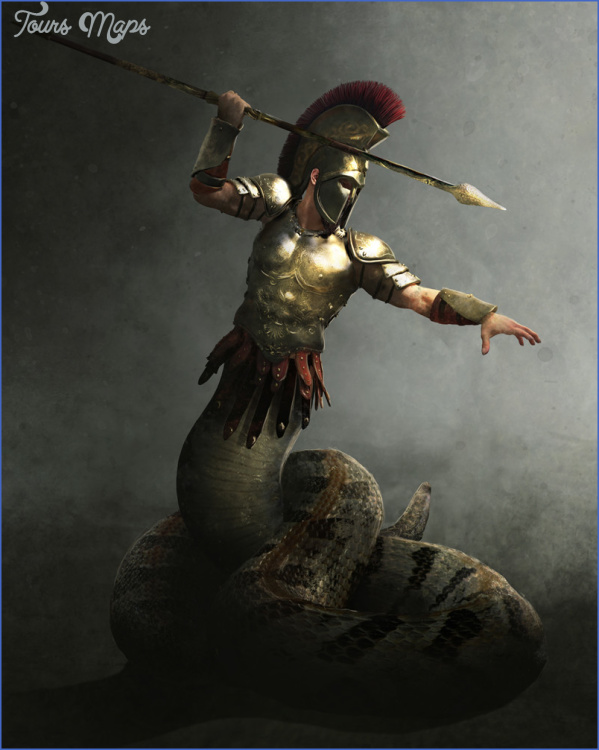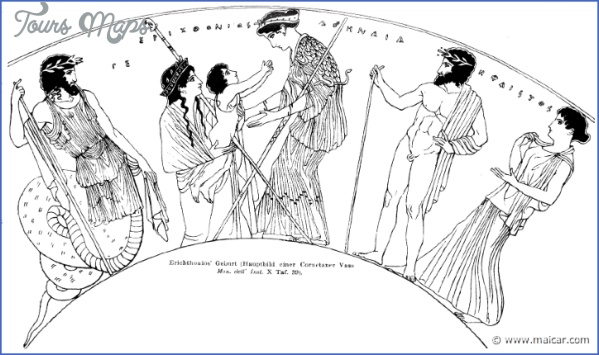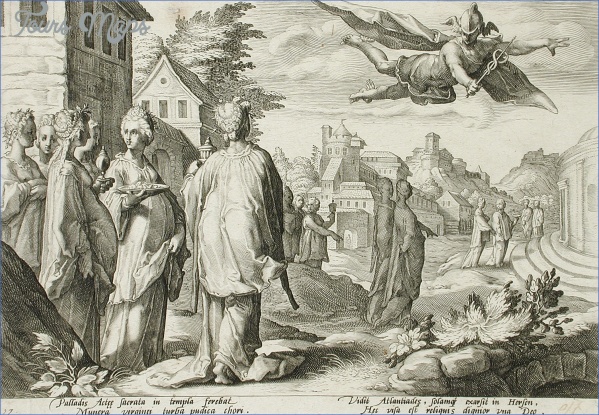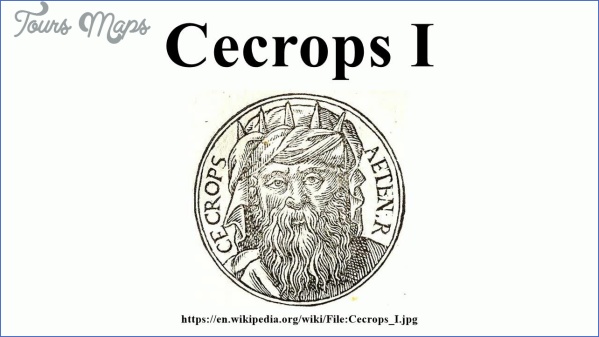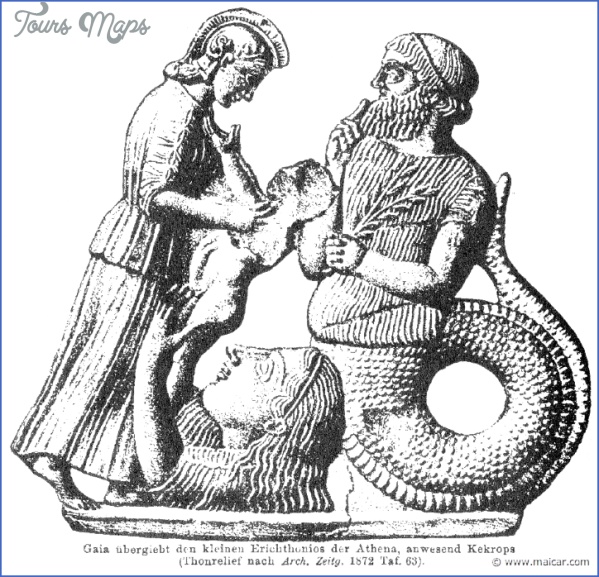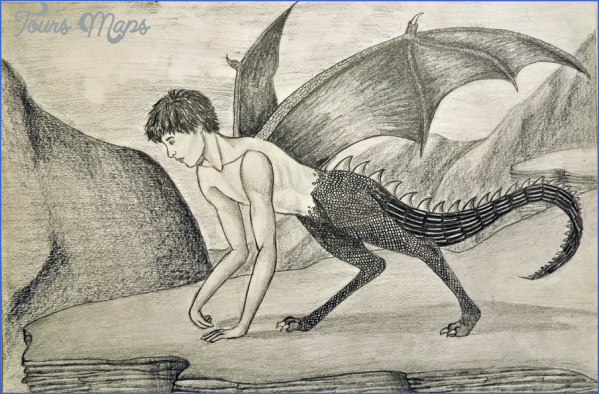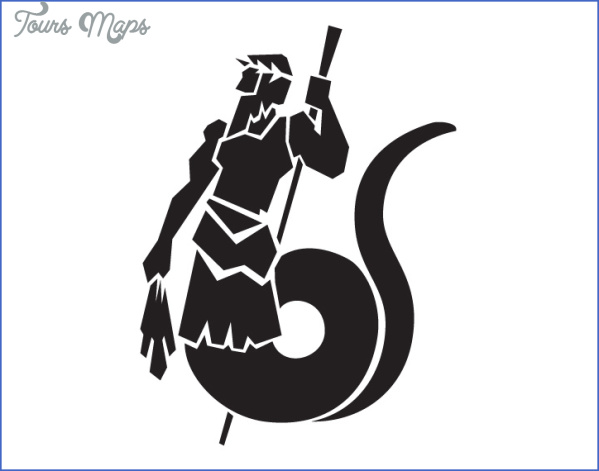Cecrops was the first king to rule from Athens (his father-in-law, Actaeus, had his capital elsewhere in Attica). His torso, arms and head were human, but being earth-born his lower body was a serpent’s. Wise and virtuous, Cecrops taught his people the art of literature as well as the rites of burial and marriage, and piously worshipped Zeus. But he refused to make blood offerings, preferring to burn cakes on the altar, a tradition which Athenians preserved in one of their rituals.
Cecrops & Erichthonius Photo Gallery
Cecrops’ successor was Erichthonius. He, too, was a hybrid man and snake, and his conception was unusual. Seeing Athene walking modestly on the Acropolis, Hephaestus tried to rape her. The virgin goddess rebuffed him, but he ejaculated uncontrollably over her thigh. Athene wiped off the semen with a handful of wool, which she flung to the ground and soon forgot. But the semen soaked into the soil, where it impregnated Gaia. The resultant child was Erichthonius (‘Wool-Earth’).
Horrified at his appearance, Athene locked Erichthonius into a box, which she gave to Cecrops’ three daughters with instructions never to open it, but, tantalized, two could not resist. They prised off the lid and looked inside. Screaming in terror at the snaky child, they dropped the box, ran to the Acropolis’ edge and threw themselves to their death. Only Pandrosus (‘All-Dewy’), the third of Cecrops’ daughters, survived. In historical times she was honoured with a garden near Athene’s olive tree and Poseidon’s well on the Acropolis.
Outraged at the girls’ disobedience, Athene dropped the rock she was carrying to augment the Acropolis. It remained jutting up abruptly from the soil: Mount Lycabettus. Erichthonius grew up to rule Athens. Sloughing off his human element, he was worshipped as a sacred serpent well into the Classical age and fed with honey cakes.
Maybe You Like Them Too
- Theseus & Peirithous
- The Voyage of the Argo Begins
- Minos, his Loves & his Family
- The Centaurs
- Athens in History & Today


